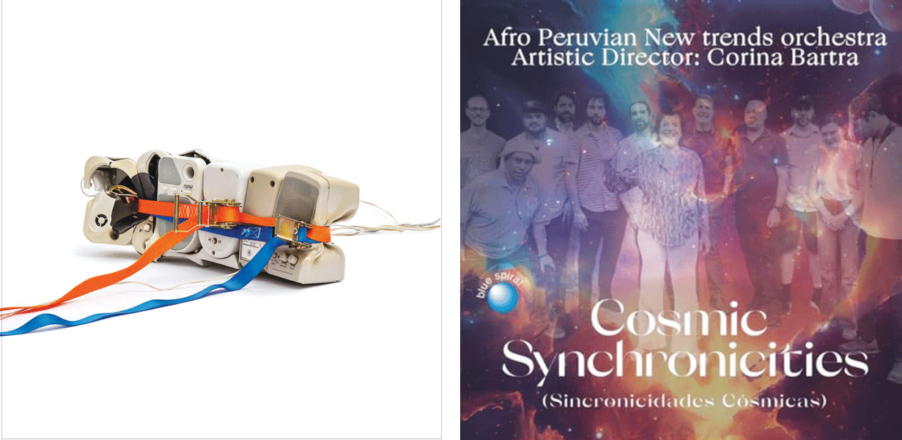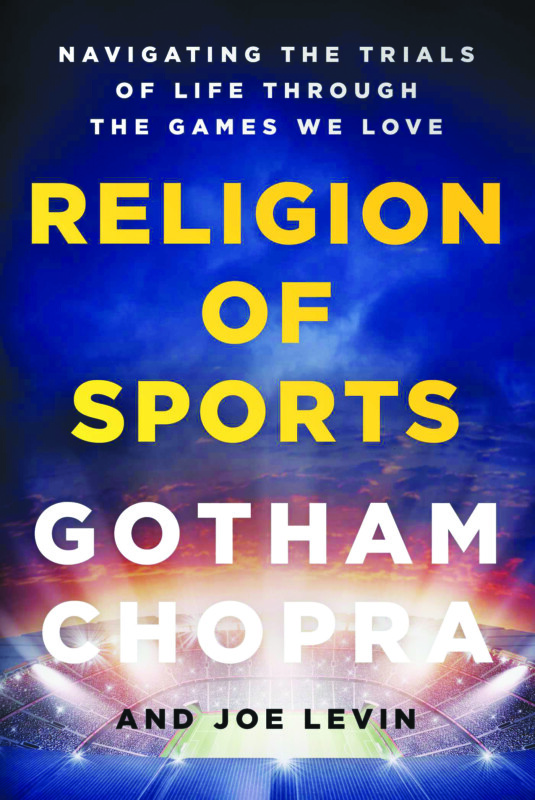Joaquin Phoenix has some fun with the hat in the Ridley Scott-directed biopic Napoleon.
It’s not a practical hat, that big angry taco of a bicorn Napoleon wears, and figuring out what to do with it seems to be part of the “in this scene, I’m feeling…” prep for building the character. Sometimes it falls off, sometimes he yanks it off, sometimes he puts it on top of an Egyptian sarcophagus. The hats are busy in this movie.
Headwear in general is a thing here, from the frizzy hair of a guillotined Marie Antoinette to the Caesar-like golden laurels Napoleon wears as he crowns himself Emperor of France. When he first meets Josephine (Vanessa Kirby), she has the hairdo of an aristocrat about to be beheaded. It’s a whole spikey hair thing and she’s sporting it at a Survivor’s Ball, which I Wikipedia-ed and it is apparently a rich-kid party of people who inherited the fortunes of their Reign of Terror-felled relatives and these events may or may not have actually happened. I did a lot of Wikipedia-ing after (and occasionally during) this movie, which assumes I know a lot more about the French Revolution and its aftermath than I do.
Napoleon distinguishes himself at the siege of Toulon, recapturing a port from the British (who were supporting the Royalists). All flush with victory, he wins over Josephine, who seems like she knows how to pick boyfriends on the come up, and then heads off to I think Italy and Egypt. Going on a prolonged work trip right after getting married isn’t great for their relationship — Josephine starts an affair with some handsome young rake. Napoleon returns to France to pout about it — he puts her stuff on the lawn of their house and then they yell at each other for a while — but this visit home also gives him an opportunity to participate in a coup. After getting himself elected as in charge (with the help of some soldiers pointing guns at the representatives doing the electing), he allows himself to be talked into taking a more kingly title to better hang with the other heads of state in Europe. Also, clearly, republican loyalties aside, he wants to be solo ruler. He crowns himself Emperor and crowns Josephine Empress and they live happily ever after for like 10 minutes until he decides that since no amount of sex is leading to a Josephine pregnancy, it’s time for him to find a new, more fertile wife. But he also still likes Josephine, who maybe still likes him? I’d say the jury is out, in the way this movie portrays it, as to whether she was ever all that deeply in love with Napoleon or she just liked the proximity to power and doesn’t like the humiliation of being set aside.
The movie is all over the place with how it feels about this relationship. On the one hand, it uses Napoleon’s letters to Josephine before, during and after their marriage as a way to narrate both military events and his thoughts and feelings. After their divorce and then later after she dies, the movie seems to indicate that Napoleon is increasingly lost without her.
But the movie also doesn’t really seem to care much about their relationship. We don’t often see them relate to each other as husband and wife, and her great influence on him is never really explored. Napoleon’s real interest is in the battle scenes. And they are cool — whether it’s a sneak attack on a fortress or an open infantry charge in a snow-covered clearing, the movie is great about building tension and excitement with these battles. There are times when everything that’s not a battle feels like just time-killing until we get to the next battle.
There is about an hour of movie after the Napoleon/Josephine divorce and I feel like the movie gets a little more unhinged but also more interesting in that hour. While we get two great Phoenix “Napoleon as angry baby” line readings before this point — him yelling “you think you’re so great because you have boats” at a British representative and him snotting that “destiny has brought me this lamb chop” during a dinner fight with Josephine — it’s this last hour where he really starts to flail around in his alternative truth world and become more of a compelling character: his “we’re winning” statements to his troops while they Eeyore around in the rain at the Battle of Waterloo, his holding forth about his greatness with a group of young boys while he’s being held captive. The movie gives us a portrait of a man who, whatever his actual skills and strengths, is being consumed by his ego and his inability to look beyond himself at the objective truths of a situation. Not surprisingly, it’s in these moments where Phoenix feels like he has the best handle on what he wants to do with the characters.
At two hours and 38 minutes, it’s hard to recommend Napoleon for just its weirdo aspects and lovingly constructed battles. But I’m also not sorry I watched it. C+
Rated R for strong violence, some grisly images (for people who can’t take bad stuff happening to animals, be warned that this movie features some real bad days for a lot of horses), sexual content and brief language, according to the MPA on filmratings.com. Directed by Ridley Scott with a screenplay by David Scarpa, Napoleon is two hours and 38 minutes long and distributed by Apple Films, which means that while it is currently available for rent or purchase it will probably eventually be available on Apple TV+.
The Color Purple (PG-13)
The life of Celie Harris gets the all-singing, all-dancing, full Technicolor treatment in the film adaptation of the stage musical The Color Purple, based on the Alice Walker novel.
Celie (Phylicia Pearl Mpasi as a teen, Fantasia Barrino as an adult) and her younger sister Nettie (Halle Berry as a teen, Ciara as an adult) are growing up in the very unhappy home of their father, Alfonso (Deon Cole). A widower since their beloved mother died, Alfonso has been raping Celie for so long that when the story starts she’s pregnant with his second child. Though Celie longs to have these children with her, Alfonso “gives them to God” after they’re born — with the sisters uncertain of exactly what that means until Celie happens to see a baby girl in town wrapped in a blanket she made. Alfonso basically sells Celie in marriage to Albert Johnson, who calls himself Mister (Colman Domingo), a widower with three small children he doesn’t take care of and a house that’s a wreck. Mister had wanted Nettie, but Alfonso refused and sort of strong-arms him into taking Celie, who is unwanted for anything other than her labor.
Though she cares for Mister’s children and brings order to his home, he is abusive to her and unkind even when they are in bed together, always pining for his mistress, the blues singer Shug Avery (Taraji P. Henson). When Nettie comes to live with Celie — escaping Alfonso’s attempts to rape her — Mister is equally awful to Nettie. He attacks her, she fights him off and he throws her out of the house, thus depriving Celie of the only kind person in her life. Which is perhaps why Celie daydreams about Shug, whose photo is on the table next to their bed. When, years later, Shug comes to town, Celie is just as excited to see her as Mister is.
Though plot descriptions call Shug Mister’s mistress and in the movie he makes some statement about how she’s the woman he should have married, you don’t get the sense that Shug feels at all this way about Mister. He is her extremely occasional fling who she can only stand so much of. As such, she seems to take a shine to (and take the side of) Celie, with the women even ending up at a movie theater enjoying some very sweet makeout time.
Though Celie is besotted with Shug, Shug eventually leaves to continue her music career and Celie remains stuck in her soul-crushing life with Mister, whose family now includes Sofia (Danielle Brooks), wife of Mister’s son Harpo (Corey Hawkins). Sofia’s take-no-poop attitude very slowly teaches Celie that she can also stand up for herself.
That song is called “Hell No!” and it’s peppy and upbeat and features some nifty choreography and the whole sequence is, like so many of the musical sections of this movie, fine. Not objectionable, not spectacular, fine. As with several of the musical numbers, the scene is of the “crowds of people singing and dancing along as a character delivers story information” variety. For me, much more successful were the sequences where the songs and settings were expressing something that Celie was feeling, as though we were going inside her head to see her, for example, falling in love with Shug while she helps to bathe and dress her. These songs, usually more intimate and featuring only Barrino singing, pull us close to the character in a way that is the opposite of the “scene on a big stage” feel of the crowd numbers. While those are pretty to look at they don’t offer quite the same charge. The one exception to that is maybe “Miss Celie’s Pants,” a group song about Celie’s pants store (selling some pretty awesome pants, by the way; I will take at least one pair of the red ones Barrino is wearing). Everybody in the scene has a narrative purpose beyond just filling out the stage.
I haven’t really sketched out all of the story here or even all of the significant characters. There is so much story packed into this movie that I feel like we’re speed-walking from this run-in with the corrupt legal system to that tale of early 20th-century colonial oppression in Africa to domestic abuse, picking up speed because we have to get to that long-buried family secret over there before the next big musical number. Which means that nothing feels like it has room to breathe or really leave an impact.
These criticisms aren’t a reason not to watch the movie, more an explanation of why I found myself not feeling more enthusiasm as the movie got to its (soulful, moving) conclusion. From the performances — Barrino, Henson and Brooks in particular — to the very lovely cinematography, The Color Purple is a movie worth experiencing. B
Rated PG-13 for mature thematic content, sexual content, violence and language, according to the MPA on filmratings.com. Directed by Blitz Bazawule with a screenplay by Marcus Gardley, The Color Purple is two hours and 21 minutes long and distributed by Warner Bros. It is available for rent or purchase.
Past Lives (PG-13)
Childhood friends reunite in their 20s and again in their 30s in Past Lives, a charming story about memory and connection.
Twelve-year-olds Na Young (Seung Ah Moon) and Hae Sung (Seung Min Yim) are best friends and sort-of sweethearts in Seoul. Na’s mom (Ji Hye Yoon) suggests they go on a “date” — which is more playdate than anything else, with the kids running around a park while the moms watch. As Na’s mom explains, the family is emigrating and she wants Na to have some happy memories of her friend in Korea. And then, abruptly, Na says goodbye to Hae Sung after school one day and the family moves to Canada, where she becomes Nora.
Some 12 years later, after Nora (Greta Lee) has moved to New York City and Hae Sung (Teo Yoo) has finished his mandated military service, she discovers a note on the social media page of her father, a filmmaker, from Hae Sung. He’s looking for Na Young, his childhood friend. She looks him up and responds. They begin a Skype relationship, talking about their lives and just sort of happy to see each other and the grown people they’ve become. Neither seems particularly able or willing to cross half the globe to visit the other and soon Nora decides that they need to take a break. She goes to a writers retreat and meets Arthur (John Magaro); we see Hae Sung meets someone too.
Another 12 years later and Nora and Arthur are married, with Nora attending casting sessions for the play she wrote and Arthur attending readings for his book. They live in New York City and Arthur is trying to learn Korean. Hae Sung comes to New York “for a vacation” — as he tells his friends and Nora tells Arthur. But Arthur, Hae Sung, his friends and maybe even Nora know that he’s coming to see her, even though he knows she’s married and he has no particular plans for, like, whisking her away.
At one point, Arthur talks about how in a story, Nora and Hae Sung would be lovers fated to be together. They weren’t lovers, Nora reminds him, and she’s meant to be where she is, in New York, with Arthur. And she means this, and yet it’s undeniable that Hae Sung is something to her, he’s connected. Maybe not, as Hae Sung says, in this life but in other lives. Their relationship gets to the heart of how people and our connection to them, especially if there’s a physical break in the relationship, get all tangled up in who we were when we knew them, where we were in life. Hae Sung is Nora’s childhood sweetheart, a boy she liked for a certain set of reasons then, but he is also herself at 12 and her life in Korea and how she felt before emigrating. When she sees him, first in her 20s and later in her 30s, she says a sort of astounded “whoa,” which feels like a “whoa” not just at seeing Hae Sung but at seeing that version of herself again. It’s some delicate work, getting us to see that story and perspective, but the movie and Greta Lee do a masterful job. There is a sweetness and kindness and sadness between these friends at every point in their lives (so far) and the movie gives both of them their emotional due. Lee and Teo Yoo have excellent chemistry, as do Lee and John Magaro, who have conversations that sound like real things married people might say to each other (a movie/TV rarity).
Past Lives is a soft, bittersweet story that has a joyfulness about it as well. A
Rated PG-13 for some strong language, according to the MPA on filmratings.com. Written and directed by Celine Song, Past Lives is an hour and 45 minutes long and distributed by A24. It is available for rent and purchase.
Featured photo: Napoleon.






